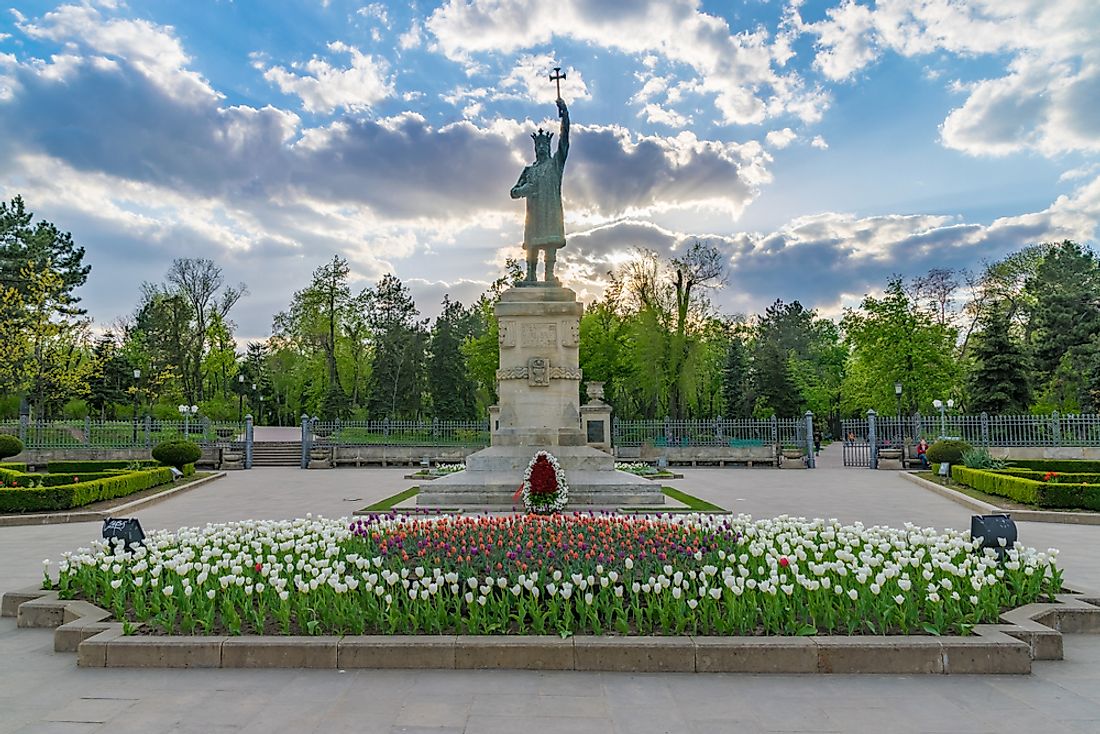The Climate of Moldova

Moldova is a sovereign state found in the northeastern corner of the Balkan region in Europe. Chisinau, the nation's capital, is found in the south-central region of the country. The climate of Moldova is warm and moderately continental with significant modification of conditions near the Black Sea. It is comprised of a long frost-free period and a relatively mild winter. The small, fairly flat country experiences a relatively homogeneous climate with slight deviations. For example, the north may experience snow while the south might not.
The nation experiences significant temperature fluctuations. The southern part of the nation normally experiences extended drought periods. The country's average temperatures are around 40 degrees Fahrenheit in the north with lows of about 50 degrees Fahrenheit in the south. Temperatures in July in the north average about 60 degrees Fahrenheit. Temperatures in the south can rise to about 70 degrees Fahrenheit. Temperatures do not normally drop below 20 degrees Fahrenheit in January. The nation is on record for experiencing lows of up to -30 degrees Fahrenheit in the north and highs of up to 100 degrees Fahrenheit in the south. Winds normally blow from the southeast and northwest.
Precipitation
Moldova experiences highly variable levels of precipitation. The annual average precipitation is about 21.5 inches with the south experiencing significantly lower precipitation. Precipitation is experienced more frequently in the winter months. The precipitation is however not abundant due to the low temperatures and occurs in the form of light snow. The variations in precipitation may, however, result in years with nearly double that amount of rainfall and other years with prolonged dry spells. Precipitation mainly occurs in the form of rain in warmer months. The rainy months are June and July with a significant amount of the rain coming from afternoon thunderstorms, and most rainfall on average occurs during the winter. The month of August has an average of 1.8 inches of precipitation which is experienced on an average of 8 days. The month of August has less frequent thunderstorms. The lowest amount of precipitation is experienced in October with an average of 1 inch of rainfall. The month of October experiences an average of 6 days of precipitation. Heavy summer showers in the irregular terrain can cause significant erosion and river silting problems.
Winter
The country’s winter is cold with the average temperature in January around 29 degrees Fahrenheit. Cold temperatures of around -31 degrees Fahrenheit are experienced in the north while temperatures of -22 degrees Fahrenheit are experienced in the capital Chisinau. Moist and mild air masses from the Mediterranean may at times raise the temperatures above 32 degrees Fahrenheit and melt the snow. Cold air masses of Russian or Arctic origin may at times lower the temperatures to as low as -4 degree Fahrenheit and at times even lower.
Summer
Moldova's summer is warm. July and August are the warmest months with minimum average temperatures of around 59 and 61 degrees Fahrenheit in the north and 60 and 63 degrees Fahrenheit in the south of the country which means cool nights. The maximum average temperatures in the north are around 79 degrees Fahrenheit while the average maximum temperatures in the south are around 81 and 82 degrees Fahrenheit. Thunderstorms may be experienced, especially in June and July. Sunshine is experienced frequently. The nation experiences an average of 9 and 9.5 hours of sunshine between June and August. The temperatures are usually favorable, however heat waves are at the time experienced. The heat waves can raise temperatures to about 95 degrees Fahrenheit. The highest temperature recorded in the capital city was 102 degrees Fahrenheit. Floods may also occur in the summer as was experienced in July 2008 and 2010. The floods are as a result of the heavy rains that occur in the Carpathian region and the swelling of the Dniester River.
Spring and Autumn
Spring and autumn in the country are quite short and pleasant. The first mild and warm days in spring are at times followed by sudden temperature drops with the possibility of snowfall in March and early April. The first cold days of autumn occur in November and at times in late October.











